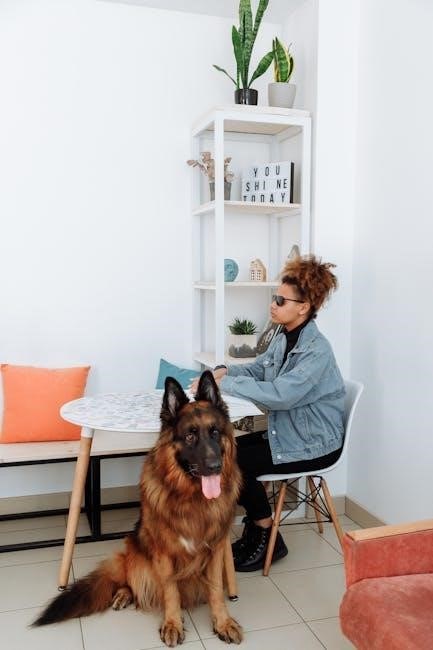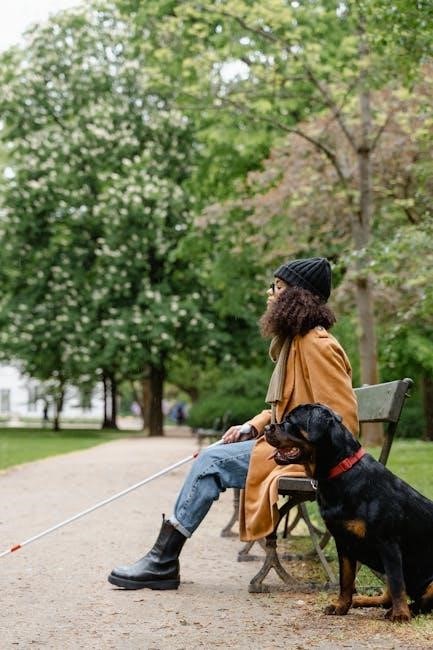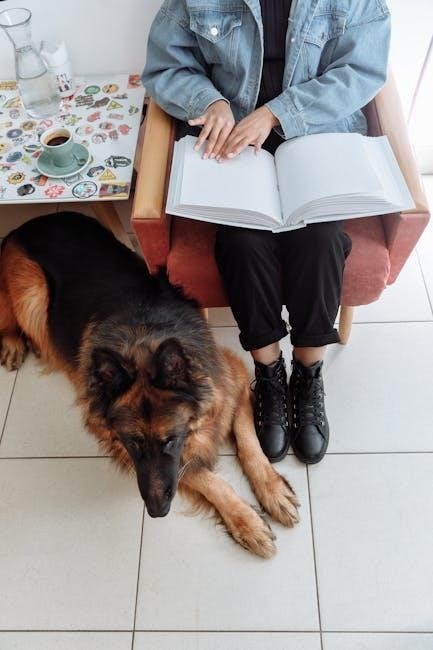
Cystotomy in Dogs: A Comprehensive Guide
Navigating your dog’s cystotomy journey demands understanding and diligent care. Recovery typically spans two to three weeks, requiring strict adherence to post-operative instructions.
Activity restriction,
E-collar use, and
wound monitoring are vital for optimal healing and preventing complications.
What is a Cystotomy?
A cystotomy is a surgical procedure performed on dogs to access the urinary bladder. Specifically, it involves making an incision into the bladder itself. This isn’t simply surgery on the bladder, but into it – hence the name, derived from “cysto” (bladder) and “-tomy” (incision).
Veterinarians undertake cystotomies for various reasons, but the core purpose remains consistent: to remove obstructions or address issues within the bladder that cannot be resolved through less invasive methods. These obstructions frequently include bladder stones, tumors, or foreign objects. The procedure allows direct visualization and manipulation within the bladder, ensuring thorough treatment.
During a cystotomy, the surgeon carefully opens the bladder, removes the problematic material, and then meticulously closes the incision in layers. This layered closure is crucial to prevent leakage and promote proper healing. It’s considered a significant surgical intervention, requiring careful pre-operative preparation, skilled execution, and diligent post-operative care to ensure a successful outcome for your canine companion.
Why Does My Dog Need a Cystotomy?
Several conditions necessitate a cystotomy in dogs, primarily those impacting the urinary bladder’s function. The most common reason is the presence of bladder stones (uroliths). These stones can cause significant irritation, blockage of urine flow, and even life-threatening complications. Tumors, both benign and malignant, within the bladder also frequently require surgical removal via cystotomy.
Furthermore, foreign bodies – objects ingested by your dog that migrate into the bladder – often necessitate this procedure for safe extraction. These can include anything from small toys to pieces of bone. Urinary tract infections, while typically treated with medication, can sometimes lead to severe inflammation and strictures requiring surgical correction through a cystotomy.
In some cases, congenital abnormalities of the bladder may also warrant surgical intervention. Ultimately, your veterinarian will recommend a cystotomy when non-surgical treatments are insufficient to alleviate your dog’s urinary issues and restore normal bladder function, prioritizing their health and well-being.
Pre-Operative Preparation
Thorough preparation is crucial for a successful cystotomy. Your veterinarian will likely request pre-operative bloodwork to assess your dog’s overall health and kidney function, ensuring they are fit for anesthesia. Fasting is essential; typically, food is withheld for 8-12 hours before surgery to prevent complications during anesthesia, though water may be allowed until the morning of the procedure.
A pre-surgical physical examination will be performed to confirm your dog’s condition and identify any potential risks. Your vet will also discuss the surgical plan, anesthesia protocol, and potential complications with you in detail. It’s important to inform your veterinarian of any medications your dog is currently taking, including supplements, as some may need to be adjusted or discontinued prior to surgery.
Finally, your dog may require a pre-operative urinary catheterization to fully empty the bladder before the cystotomy. This helps to minimize surgical complications and provides a sterile urine sample for analysis. Following these guidelines diligently will contribute to a smoother and safer surgical experience for your beloved companion.
Anesthesia and Surgical Procedure
Cystotomies are performed under general anesthesia to ensure your dog remains comfortable and pain-free throughout the procedure. Your veterinarian will carefully monitor your dog’s vital signs – heart rate, blood pressure, respiration, and body temperature – throughout the entire process. Anesthesia protocols are tailored to each dog’s individual needs and health status.
The surgical procedure involves making an incision into the bladder to access and address the underlying issue, such as bladder stones or tumors. Once the problem is resolved, the bladder is carefully closed in layers with sutures. A urinary catheter is typically left in place for several days post-operatively to allow the bladder to heal and ensure proper urine drainage.
The duration of the surgery varies depending on the complexity of the case. Following the procedure, your dog will be closely monitored during the recovery phase until they are stable enough to be discharged, usually when they are eating and able to urinate.
Post-Operative Care: The First 24-48 Hours
The initial 24-48 hours post-cystotomy are critical for your dog’s recovery. Expect your dog to be groggy and uncomfortable upon discharge, requiring a quiet and confined space to rest. Monitor the incision site closely for any signs of excessive bleeding, swelling, or discharge – contact your vet immediately if observed.
Offer small, frequent meals of easily digestible food, as anesthesia can temporarily suppress appetite. Ensure fresh water is always available, but monitor intake to avoid overhydration. Expect some blood in the urine initially, which should gradually decrease. The urinary catheter will remain in place during this period, and you’ll need to prevent your dog from interfering with it.
Strict activity restriction is paramount. Limit movement to essential bathroom breaks, keeping your dog on a leash even indoors. Pain medication, as prescribed by your veterinarian, should be administered as directed to maintain comfort. Close observation and prompt communication with your vet are key during these crucial first days.
Pain Management After Cystotomy
Effective pain management is crucial for a comfortable recovery following a cystotomy. Your veterinarian will prescribe pain medication, typically opioids or NSAIDs, tailored to your dog’s individual needs and pain level. Administer these medications precisely as directed, adhering to the dosage schedule and duration. Do not administer human pain medications, as many are toxic to dogs.
Observe your dog closely for signs of pain, including restlessness, whimpering, decreased appetite, hiding, or reluctance to move. Report any concerns to your veterinarian promptly. Pain levels can fluctuate, and adjustments to medication may be necessary. It’s important to proactively manage pain rather than waiting for it to become severe.
Alongside medication, provide a comfortable and supportive environment. Soft bedding, gentle handling, and minimizing stress can all contribute to pain relief. Remember that pain can hinder the healing process, so effective management is essential for a smooth and successful recovery.
Wound Care and Monitoring
Diligent wound care and monitoring are paramount to prevent infection and ensure proper healing after a cystotomy. Inspect the incision site at least twice daily for any signs of redness, swelling, discharge, or separation. A small amount of clear fluid may be normal initially, but any pus-like discharge or increasing redness warrants immediate veterinary attention.
Keep the surgical site clean and dry. Follow your veterinarian’s instructions regarding cleaning – typically, gentle cleaning with a mild antiseptic solution is recommended. Prevent your dog from licking or scratching at the incision, as this introduces bacteria and can disrupt the healing process. The E-collar (Elizabethan collar) is essential for this purpose.
Monitor your dog’s overall condition alongside the wound. Changes in appetite, lethargy, or fever could indicate an infection or other complication. Early detection and intervention are key to a successful recovery. Contact your veterinarian immediately if you observe any concerning signs.
E-Collar (Elizabethan Collar) Usage

The E-collar, often called an Elizabethan collar or “cone of shame,” is a critical component of post-cystotomy recovery. Its primary function is to prevent your dog from accessing and irritating the surgical incision. Licking or chewing at the wound introduces bacteria, significantly increasing the risk of infection and hindering the healing process.
Your dog should wear the E-collar at all times for the duration specified by your veterinarian – typically 10 to 14 days, or until the incision is fully healed. Ensure the collar fits properly; it should extend beyond the tip of the nose to prevent access to the surgical site. Monitor your dog closely when first introduced to the collar, as they may experience initial clumsiness or distress.
While the E-collar can be frustrating for your dog, it’s essential for their well-being. Do not remove it, even for short periods, unless specifically instructed by your veterinarian. Supervision is key, but constant vigilance isn’t always possible, making the E-collar a non-negotiable safety measure.
Diet and Hydration Post-Surgery
Following a cystotomy, your dog’s diet and hydration are paramount for a smooth recovery. Initially, your veterinarian may recommend a bland, easily digestible diet – often boiled chicken and rice – to minimize gastrointestinal upset, especially if anesthesia caused nausea. Gradually reintroduce your dog’s regular food over several days, monitoring for any signs of vomiting or diarrhea.
Ensure constant access to fresh, clean water. Adequate hydration is crucial for urinary tract health and overall recovery. Encourage drinking, and if your dog is reluctant, offer low-sodium chicken broth or water mixed with a small amount of their food. Monitor urine output; it should be a normal color and volume.
Avoid any sudden dietary changes and refrain from offering treats or table scraps during the recovery period. Stick to the veterinarian’s recommendations regarding feeding amounts and frequency. Proper nutrition supports wound healing and helps your dog regain strength and vitality post-surgery.
Activity Restriction: A Crucial Component of Recovery

Strict activity restriction is non-negotiable following your dog’s cystotomy. For the initial 10-14 days, confine your dog to a small, comfortable space – a crate or a single room – to limit movement. This prevents strain on the surgical site and minimizes the risk of complications like suture disruption or internal bleeding.
No running, jumping, stair climbing, or rough play is permitted. Leash walks should be short and solely for urination and defecation; keep the pace slow and controlled. Avoid allowing your dog to greet other animals or people during these brief outings. Even seemingly minor activities can jeopardize the healing process.
Resist the urge to let your dog “just rest” without supervision. They may instinctively attempt to move more than is safe. Consistent enforcement of activity restriction is vital for a successful recovery and long-term well-being. Patience is key during this period.
Recognizing Signs of Complications
Post-cystotomy, vigilant monitoring for complications is essential. Contact your veterinarian immediately if you observe any concerning signs; These include persistent lethargy, loss of appetite, or vomiting – indicators of potential internal issues. Fever (rectal temperature above 103°F) suggests infection.
Pay close attention to the surgical site. Increased redness, swelling, discharge (especially pus-like), or a foul odor are red flags. Any significant bleeding from the incision warrants immediate veterinary attention. Straining to urinate, blood in the urine, or an inability to urinate are critical emergencies.
Behavioral changes, such as increased pain vocalization or restlessness, should also be reported. Remember, dogs often mask discomfort, so subtle changes can be significant. Early detection and intervention are crucial for managing complications effectively and ensuring a positive outcome. Don’t hesitate to seek professional guidance if you’re unsure.

Urinary Tract Infections (UTIs) Post-Cystotomy
Following a cystotomy, dogs are at an increased risk of developing urinary tract infections (UTIs). The surgical procedure can introduce bacteria into the urinary tract, disrupting its natural defenses. Recognizing UTI symptoms promptly is crucial for effective treatment.
Common signs include frequent urination, straining to urinate, and increased urgency. You may also notice blood in the urine (hematuria) or cloudy urine. Behavioral changes, such as increased licking of the genital area, can also indicate discomfort. A strong urine odor is another potential sign.
If you suspect a UTI, a veterinary visit is essential. Diagnosis typically involves a urinalysis to identify bacteria and assess kidney function. Treatment usually consists of a course of antibiotics prescribed by your veterinarian. Completing the entire antibiotic course is vital, even if symptoms improve, to prevent recurrence and antibiotic resistance.
Urine Monitoring and Analysis
Diligent urine monitoring is a cornerstone of post-cystotomy care. Your veterinarian will likely request several urine samples during the recovery period to assess healing and detect potential complications. These analyses are vital for ensuring optimal urinary tract function.
Initial post-operative checks focus on confirming complete bladder emptying and ruling out infection. Subsequent analyses monitor for the presence of blood, protein, glucose, and bacteria. The urine’s pH level is also assessed, as imbalances can contribute to crystal formation. A urinalysis provides a comprehensive snapshot of urinary health.
Collecting urine samples can be achieved through various methods, including free catch, cystocentesis (needle aspiration), or catheterization. Your veterinarian will determine the most appropriate technique. Accurate sample collection is crucial for reliable results. Regular monitoring allows for early detection of issues, enabling prompt intervention and preventing more serious problems.
Suture Removal and Follow-Up Appointments
Typically, suture removal is scheduled 10 to 14 days post-cystotomy, allowing sufficient time for tissue healing. Your veterinarian will assess the incision site to confirm adequate closure and minimal inflammation before proceeding. Do not attempt to remove sutures yourself, as this could compromise the healing process and introduce infection.

Follow-up appointments are crucial for monitoring your dog’s overall recovery and addressing any concerns. These appointments usually involve a physical examination, assessment of the incision site, and potentially repeat urine analysis. Your veterinarian will evaluate your dog’s activity level, appetite, and urination habits.
During these check-ups, discuss any observed changes in your dog’s behavior or health. Promptly report any signs of complications, such as redness, swelling, discharge from the incision, or difficulty urinating. Adhering to the recommended follow-up schedule ensures early detection of potential issues and supports a smooth, successful recovery.
Potential Long-Term Effects
While most dogs recover fully after a cystotomy, some may experience long-term effects. Urinary incontinence, or leakage of urine, is a potential complication, particularly in female dogs, due to hormonal changes or weakened sphincter muscles. This can often be managed with medication prescribed by your veterinarian.

Scar tissue formation at the surgical site can, in rare cases, lead to narrowing of the urethra, causing difficulty urinating. Regular monitoring by your vet is essential to detect and address any such issues promptly. Increased susceptibility to urinary tract infections (UTIs) is another possibility, requiring vigilant observation for signs like frequent urination or straining.

Occasionally, dogs may exhibit behavioral changes post-surgery, such as anxiety or sensitivity around the abdomen. Patience and positive reinforcement can help them adjust. Long-term success relies on consistent follow-up care and proactive management of any emerging concerns.
Managing Incontinence After Cystotomy
Incontinence, or accidental urination, can occur after a cystotomy, especially in female dogs. It’s crucial to understand this is often manageable, not a sign of failure. Your veterinarian may prescribe medications like phenylpropanolamine (PPA) to strengthen the urethral sphincter, improving bladder control. These medications require regular monitoring for side effects.
Alongside medication, behavioral adjustments can help. Frequent, scheduled potty breaks – even more often than usual – can reduce accidents. Consider using dog diapers or belly bands as a temporary solution, providing dignity and preventing messes. Maintaining a consistent routine and providing positive reinforcement for successful potty breaks are key.
Dietary adjustments, such as ensuring adequate hydration and avoiding excessive water intake before bedtime, may also be recommended. Close communication with your vet is vital to tailor a management plan to your dog’s specific needs and adjust treatment as necessary. Patience and understanding are paramount during this process.
Dealing with Accidents During Recovery
Accidents are unfortunately common during the recovery period following a cystotomy. It’s essential to approach these with patience and understanding; your dog isn’t being disobedient. The surgical procedure and associated discomfort can temporarily impair bladder control. Increased frequency of urination, dribbling, or complete loss of control can occur.
Focus on creating a stress-free environment. Avoid scolding or punishing your dog, as this will only increase anxiety and potentially worsen the situation. Instead, thoroughly clean up accidents with an enzymatic cleaner to eliminate odors and discourage repeat occurrences in the same spot. Consider confining your dog to a smaller, easily cleaned area when unsupervised.
Monitor your dog closely for any signs of discomfort or straining during urination, and report these to your veterinarian immediately. Remember, accidents are a temporary part of the healing process, and with consistent care and a supportive attitude, your dog will regain control. Empathy is key during this challenging time.
Preventing Infection at the Surgical Site
Maintaining a clean and protected surgical site is paramount to preventing infection post-cystotomy. The primary defense is consistent use of an Elizabethan collar (E-collar) – preventing your dog from licking or chewing at the incision is crucial. Saliva introduces bacteria, significantly increasing infection risk and potentially disrupting the healing process.
Regularly inspect the incision site for signs of infection: redness, swelling, discharge (especially if pus-like or foul-smelling), and excessive pain. Contact your veterinarian immediately if you observe any of these symptoms. Avoid bathing your dog or allowing them to swim until the incision is fully healed, typically 10-14 days.
Follow your veterinarian’s instructions regarding wound cleaning. Generally, keeping the area dry is best. If instructed to clean, use a mild antiseptic solution as directed. Promptly address any concerns, as early intervention can prevent minor issues from escalating into serious complications. Diligent care is essential for a smooth recovery.
Common Post-Operative Behaviors
Following a cystotomy, expect some behavioral changes in your dog. Lethargy and reduced appetite are common during the initial 24-48 hours as they recover from anesthesia and surgery. Increased sleep and a general reluctance to engage in playful activities are also typical. Some dogs may exhibit temporary changes in their bathroom habits, including increased frequency or difficulty urinating.

It’s important to be patient and understanding if your dog has accidents indoors during the recovery period; they may genuinely struggle with control. Emotional changes, such as clinginess or mild anxiety, can occur as they adjust to feeling unwell and restricted. Monitor for signs of pain, like whining, restlessness, or hiding, and contact your vet if concerned.
Remember that these behaviors are usually temporary. Providing a quiet, comfortable space and following post-operative instructions will help your dog navigate this recovery phase. Avoid stressing your pet and offer gentle reassurance as they heal.
Recovery Timeline: What to Expect
The initial 24-48 hours post-cystotomy are crucial for stabilization. Your dog will likely remain at the veterinary clinic until they are eating and able to urinate comfortably. Full recovery typically takes two to three weeks, but individual timelines vary.
During the first 10-14 days, strict activity restriction is paramount. Expect wound healing to progress, requiring diligent monitoring for signs of infection. The e-collar (Elizabethan collar) must be worn consistently to prevent licking or chewing at the incision site. Gradual increases in activity can begin after suture removal, usually around 10-14 days, as directed by your veterinarian.

Most dogs return to normal activities within two weeks post-surgery, though some may require a slightly longer recovery period. Regular follow-up appointments are essential to ensure proper healing and address any concerns. Patience and consistent care are key to a successful recovery.

When to Contact Your Veterinarian Immediately
Prompt veterinary attention is crucial if you observe concerning signs post-cystotomy. Immediately contact your veterinarian if your dog exhibits persistent lethargy, loss of appetite, or vomiting. Any signs of fever, such as elevated temperature or shivering, warrant immediate evaluation.
Concerning symptoms around the surgical site include increased redness, swelling, discharge (especially if pus-like or foul-smelling), or significant pain. Difficulty urinating, straining to urinate, or blood in the urine are also red flags. Accidents in the house, especially if unusual for your dog, should be reported.
Furthermore, if the incision opens, or if your dog is excessively agitated or showing signs of severe discomfort, seek immediate veterinary care. Don’t hesitate to err on the side of caution; early intervention can prevent complications and ensure a smoother recovery. Your veterinarian is the best resource for addressing any post-operative concerns.
Resources for Dog Owners
Navigating your dog’s recovery after a cystotomy can be eased with access to reliable information and support. The American Veterinary Medical Association (AVMA) offers comprehensive resources on pet health, including post-operative care guidelines – visit www.avma.org.
Veterinary partner websites, such as VeterinaryPartner.vin, provide detailed articles on cystotomy procedures, potential complications, and recovery expectations, written by veterinary professionals. Local veterinary hospitals often have online resources and FAQs specifically tailored to post-surgical care.
Consider joining online pet owner communities and forums dedicated to canine health. These platforms offer a space to connect with other owners who have experience with cystotomies, share advice, and gain emotional support. Remember to always verify information with your veterinarian before implementing any new care strategies. Your vet remains your primary source of guidance throughout the recovery process.